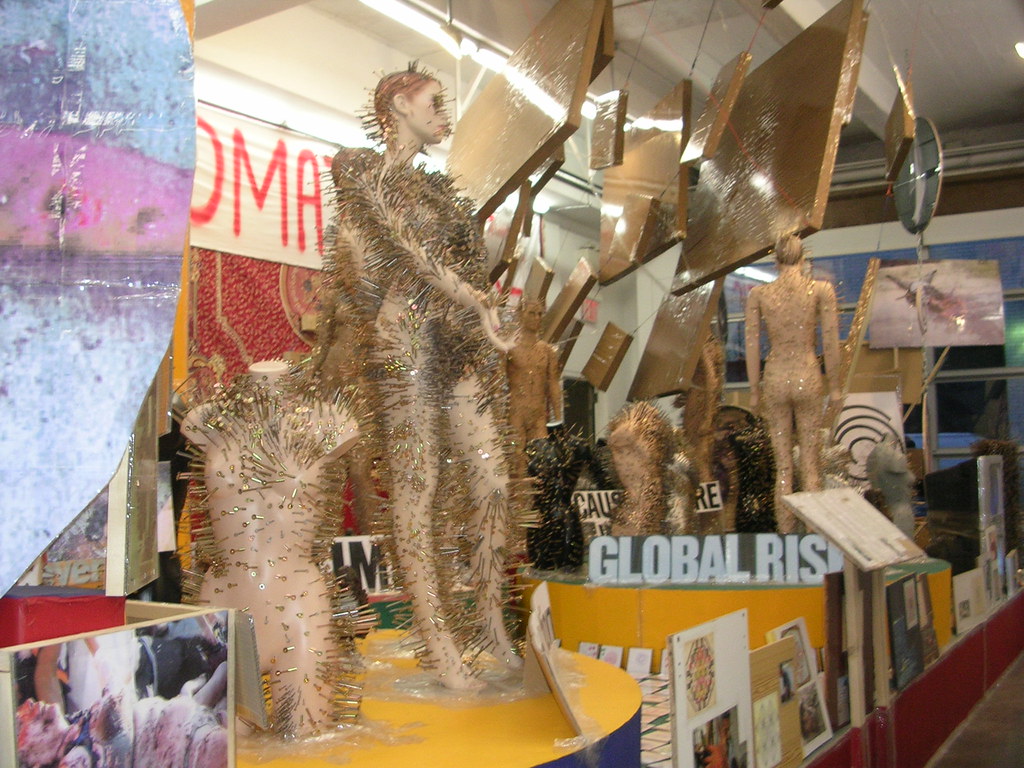"Then with the Sony Outsider I thought, Okay, I’m going to expand this idea and make it more violent and aggressive and difficult I’ll make a perfect full-scale model of the atomic bomb that was dropped on Nagasaki, but I’ll make it Sony. It’s like cargo-culture shit. We don’t just drop bombs, we drop culture, and that’s how we erase culture." -Tom SachsIn Steven Pinker's book, The Better Angels of out Nature, he makes the distinction between "great powers" - those nations like the US, Britain, France and nominally Russia (they have nukes) - that can make war anywhere in the world, regional powers - like China Pakistan and India - that can project martial power locally, but only against their immediate neighbors; and then finally lesser powers - like South Sudan and Nigeria - that are only able to project violence against their own civilian populations.
Sony Outsider, Tom Sachs (1998)
Organized early on, as national cinemas, the great powers of film coincide with the military great powers the US is the world's only movie superpower, Britain, France, are obvious Great Powers, and do indeed project their power internationally. (Again Russia is nominally a great power - which is to day they have nukes, but its hard to imagine them waring, even with art, on anyone but their weakest neighbors.) Regional powers like India, China, Korea and Japan, as well as lesser powers like Israel, Mexico, and Brazil sometimes jump the line with worldwide hits, but the great majority of their national cinemas' output are aimed at more local audiences.
The art war is not a cold one. Everyone knows what going on, if we aren't always cognizant of which direction we are firing. The cultural packages shot over boarders are obviously loaded ideologically. American movies export "American values." The Taliban, unable and unwilling to compete in the War of Art, closed its borders, not only to foreign munitions, but to domestic art as well. When George Bush said that "they hate our freedoms" the truth was, they hate our art.
Nuclear Energy, Henry Moore (1963)
Here is the blow back that is harder to keep in mind. American art, especially its cinematic arsenal, is shaped by the international audience they are aimed at. It is easier to deliver our 'American values' via straight-forward violent action, then by means of erotic imagery or complex and sophisticated character driven narratives. We are becoming the art audience puritanical Chinese leaders wants the Chinese to be. (It helps the munitions makers that puritanical Americans want that too.)
Additionally, sophisticated filmmakers are under special critical scrutiny. Michael Bay can pump out as much contemptuous flag-draped shit as CGI artists can render, without raising eyebrows, but the ideology of Zero Dark Thirty was examined almost frame by frame.
Superficial Engagement, Thomas Hirschhorn (2006)
I am reading Ben Davis' book 9.5 Thesis on Art and Class right now, and it's his discussion of Thomas Hirschhorn's concept of Superficial Engagement that sparked these thoughts. In that chapter Davis quotes the artist Victor Burgin:
The work of "political artists" usually harms no one, and I would defend their right to make it; what I cannot support is their self-serving assumption that it "somehow" has a political effect in the real world. In a university art department, I would prefer as my colleague the artist who makes watercolours of sunsets but stands up to the administration, to the colleague who makes radical political noises in the gallery but colludes in imposing educationally disastrous government policies on the department.I have never attempted to make work that was overtly political, if anything I have avoided it - in my early 20s, working as a bronze craftsman and figurative sculptor, one of the first things I realized I did not want to make, was war memorial art. I never have since. That refusal, is to me is, an artistic political act, but an invisible one. Art - from the big guns of mass is filled with invisible apolitical acts of that sort, positive and negative.
The Hurt Locker (2008)






No comments:
Post a Comment